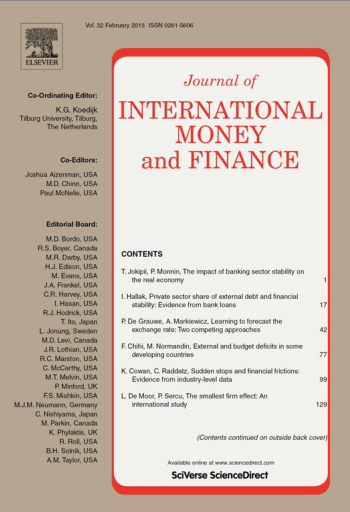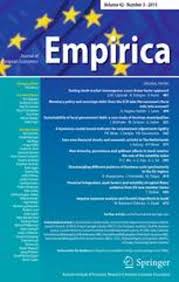
A Comparison of Monthly Global Indicators for Forecasting Growth
in: International Journal of Forecasting, No. 3, 2021
Abstract
This paper evaluates the predictive content of a set of alternative monthly indicators of global economic activity for nowcasting and forecasting quarterly world real GDP growth using mixed-frequency models. It shows that a recently proposed indicator that covers multiple dimensions of the global economy consistently produces substantial improvements in forecasting accuracy, while other monthly measures have more mixed success. Specifically, the best-performing model yields impressive gains with MSPE reductions of up to 34% at short horizons and up to 13% at long horizons relative to an autoregressive benchmark. The global economic conditions indicator also contains valuable information for assessing the current and future state of the economy for a set of individual countries and groups of countries. This indicator is used to track the evolution of the nowcasts for the U.S., the OECD area, and the world economy during the COVID-19 pandemic and the main factors that drive the nowcasts are quantified.

Fiscal Policy and Fiscal Fragility: Empirical Evidence from the OECD
in: Journal of International Money and Finance, July 2021
Abstract
In this paper, we use local projections to investigate the impact of consolidation shocks on GDP growth, conditional on the fragility of government finances. Based on a database of fiscal plans in OECD countries, we show that spending shocks are less detrimental than tax-based consolidation. In times of fiscal fragility, our results indicate strongly that governments should consolidate through surprise policy changes rather than announcements of consolidation at a later horizon.

The Appropriateness of the Macroeconomic Imbalance Procedure for Central and Eastern European Countries
in: Empirica, No. 1, 2021
Abstract
The European Commission’s Scoreboard of Macroeconomic Imbalances is a rare case of a publicly released early warning system. It was published first time in 2012 by the European Commission as a reaction to public debt crises in Europe. So far, the Macroeconomic Imbalance Procedure takes a one-size-fits-all approach with regard to the identification of thresholds. The experience of Central and Eastern European Countries during the global financial crisis and in the resulting public debt crises has been largely different from that of other European countries. This paper looks at the appropriateness of scoreboard of the Macroeconomic Imbalances Procedure of the European Commission for this group of catching-up countries. It is shown that while some of the indicators of the scoreboard are helpful to predict crises in the region, thresholds are in most cases set too narrow since it largely disregarded the specifics of catching-up economies, in particular higher and more volatile growth rates of various macroeconomic variables.

Optimizing Policymakers’ Loss Functions in Crisis Prediction: Before, Within or After?
in: Macroeconomic Dynamics, No. 1, 2021
Abstract
Recurring financial instabilities have led policymakers to rely on early-warning models to signal financial vulnerabilities. These models rely on ex-post optimization of signaling thresholds on crisis probabilities accounting for preferences between forecast errors, but come with the crucial drawback of unstable thresholds in recursive estimations. We propose two alternatives for threshold setting with similar or better out-of-sample performance: (i) including preferences in the estimation itself and (ii) setting thresholds ex-ante according to preferences only. Given probabilistic model output, it is intuitive that a decision rule is independent of the data or model specification, as thresholds on probabilities represent a willingness to issue a false alarm vis-à-vis missing a crisis. We provide real-world and simulation evidence that this simplification results in stable thresholds, while keeping or improving on out-of-sample performance. Our solution is not restricted to binary-choice models, but directly transferable to the signaling approach and all probabilistic early-warning models.

Drawing Conclusions from Structural Vector Autoregressions Identified on the Basis of Sign Restrictions
in: Journal of International Money and Finance, December 2020
Abstract
This paper discusses the problems associated with using information about the signs of certain magnitudes as a basis for drawing structural conclusions in vector autoregressions. We also review available tools to solve these problems. For illustration we use Dahlhaus and Vasishtha’s (2019) study of the effects of a U.S. monetary contraction on capital flows to emerging markets. We explain why sign restrictions alone are not enough to allow us to answer the question and suggest alternative approaches that could be used.



